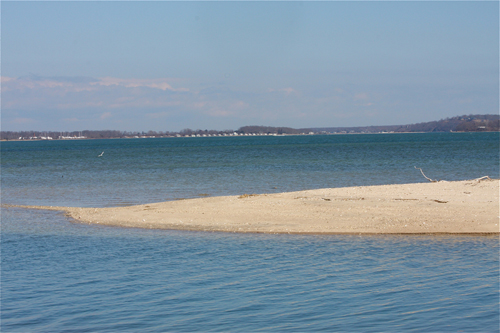Guest Column: Inaction is not an option on nitrogen

I must admit I was surprised at Bill Toedter’s response to Suffolk County Executive Steve Bellone’s commitment to address the damage to the quality of our waters that excess nutrient loading is causing. It is a complex issue and we should be glad to have a politician brave enough to take action.
There is strong evidence that our waters are degrading. There are four ways to deal with issues caused by our onsite wastewater treatment systems:
1. Do nothing.
2. Increase the number of effective central sewers.
3. Introduce decentralized clustered treatment.
4. Upgrade and enhance treatment for single onsite systems.
The only option that the County Executive is not considering is ultimately the most costly and harmful: Do nothing. While there are other actions that help purify our waters, such as re-establishing shellfish beds or protecting wetlands, these must be executed in conjunction with reductions of wastewater nutrient loading if they are to succeed.
See also: A water treatment history to learn from
Suffolk County is unevenly populated. Its western townships have urban densities averaging 2,716 people per square mile compared with the five eastern towns, which average 361 people per square mile. Nassau has even higher densities, with an average of 4,722 people per square mile. The Nassau nutrient loading joins the nitrogen loads of New York and Connecticut flowing to water bodies smaller than those that grace the East End.
It is no wonder Nassau and western Suffolk have high nitrogen levels despite extensive sewer systems.
Where densities are high, effective modern sewers make economic sense. Mr. Bellone announced plans last week for new sewer districts surrounding polluted rivers leading to the impaired bays of the South Shore. This is where the need is high and his proposals are supported by the Suffolk County Water Resources Management Plan, as well as recent modeling studies.
On the East End, mixtures of clustered and individually enhanced systems are viable for many homes and businesses. The county is considering a number of pilot programs and ways to regulate and manage these options. Last week, I joined a four-state tour that Suffolk County conducted to learn from other jurisdictions that are tackling excess nutrient loading. Some of the strategies being used were upgrades to cesspools, enhanced treatment in critical zones for system repairs, building expansions, title transfers and new construction, and implementation of policies of no-net increases in nitrogen loading. The latter requires all new development to provide enhanced treatment to a neighbor’s existing system as well as in the development’s new system!
All jurisdictions we visited felt the need to do more, at a faster pace.
Yes, more studies are needed. Cape Cod has spent 20 years and $12 million studying 32 of their 57 embayments and found that some impaired bays needed 100 percent nitrogen mitigation to aid recovery. In response, the Cape Cod Commission has now set specific goals for each sub-watershed. Their take-away: Protect your waters, preferably before impairment occurs. Act. And there is no single perfect strategy.
People are afraid of enhanced, decentralized wastewater treatment for two reasons: cost and unfettered development. Historically, sewers often accompanied spurred growth and higher densities. But sewers don’t cause density; zoning regulations do. Today sewers need to be seen as one of the effective tools that can be applied to existing communities to protect environmental resources.
To address the nitrogen crisis, we need additional methods of evaluation along with clear pollutant reduction goals. Pounds of nitrogen, rather than just nitrogen flow, and rate of discharge need to be a part of the evaluation. Many sewage treatment plants in critical areas already have these parameters in place. We need to do the same for decentralized wastewater treatment strategies. Benefiting the entire community, nitrogen mitigation protects public resources and is therefore appropriate for subsidy.
In the Long Island Sound Watershed, 54 percent of the developed parcels in Riverhead and 30 percent of those in Southold do not conform to the 20,000-square-foot minimum lot size required to protect drinking water standards. In the Peconic Estuary, 48 percent of developed parcels do not conform to minimum size requirements. We know these lots are contributing nitrogen loads that potentially threaten our drinking water sources, never mind the risk they pose to the more sensitive open waters. Clustered, decentralized wastewater systems can treat to a higher standard of water quality than onsite systems. Reuses of treated wastewater are also win-win solutions.
So while we wait for studies to evaluate sub-watershed goals, let’s attack the areas we already know are an issue with the full range of the highest levels of treatment available that makes economic and environmental sense. Let’s support Steve Bellone’s initiatives, incorporate nitrogen mitigation in our comprehensive plans, establish load limits, install pilot projects and explore funding and subsidy mechanisms. The time to act on all fronts is now — before it is too late.
 Glynis Berry is executive director of the Peconic Green Growth environmental group and a Suffolk County Planning Commission member. She lives in Orient.
Glynis Berry is executive director of the Peconic Green Growth environmental group and a Suffolk County Planning Commission member. She lives in Orient.








